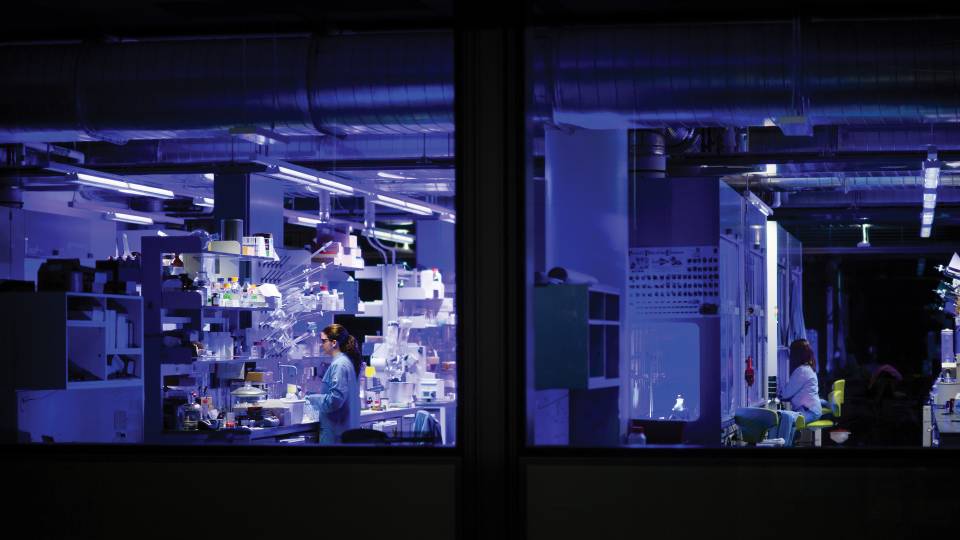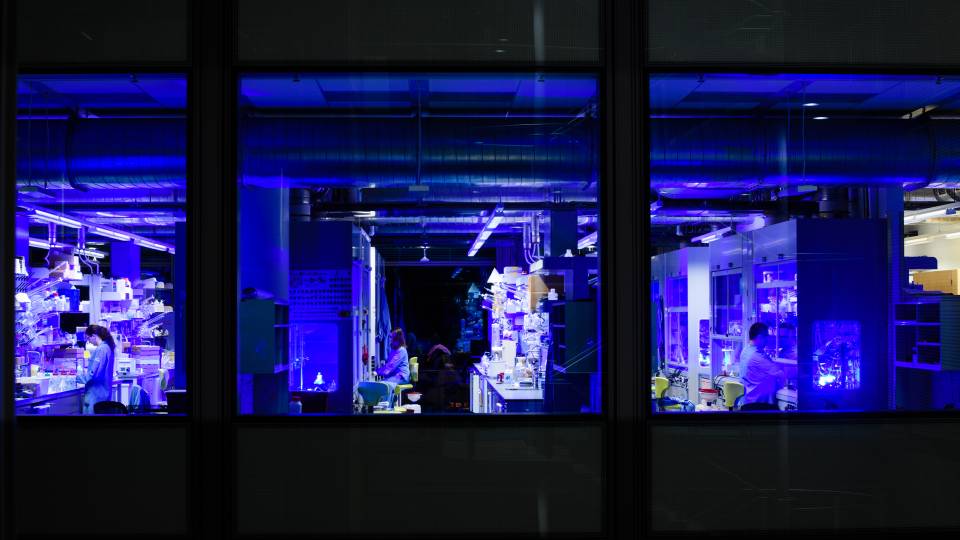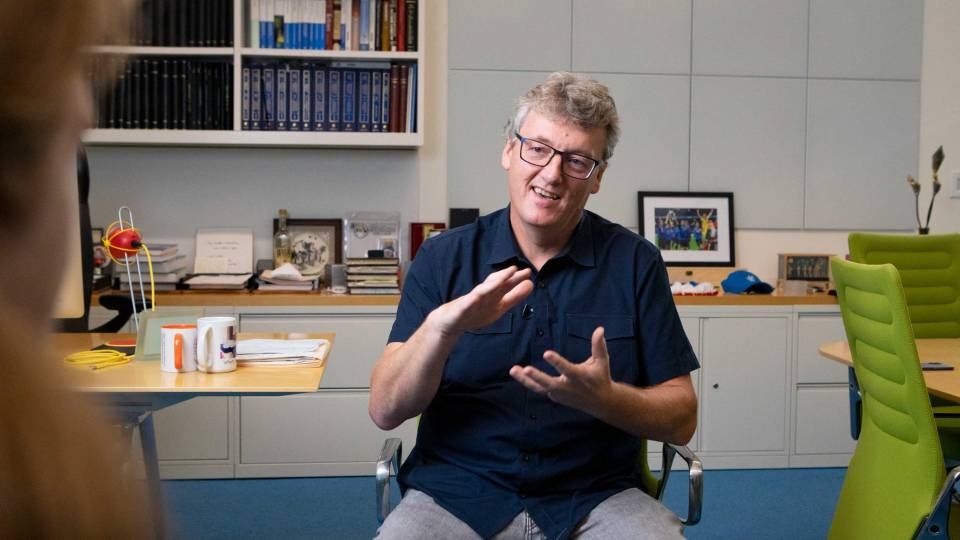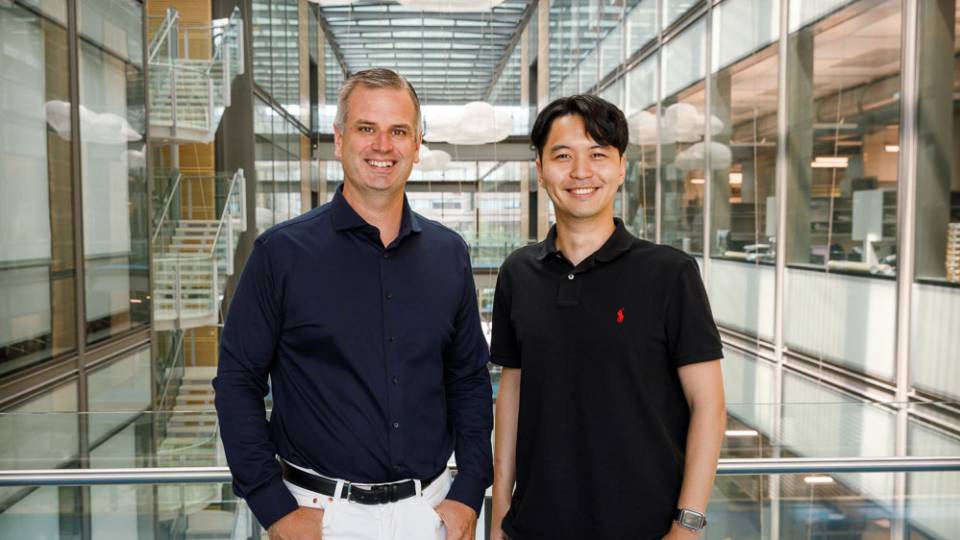Princeton scientists have discovered a way of stimulating organic molecules that they expect will prompt researchers to create materials from new kinds of chemical reactions.
The method of catalysis, when used, could lead to groundbreaking kinds of drugs and agricultural chemicals and will provide a shortcut to standard multi-step methods of chemical production.
The work, conducted by David MacMillan, the A. Barton Hepburn Professor of Organic Chemistry at Princeton, and David Nicewicz, a postdoctoral fellow, will appear in a special online edition of Science on Sept. 4.
The method is disarmingly easy to perform but deeply complex in terms of the science behind it. At its simplest, the process involves using a weak source of light -- like a household light bulb -- to catalyze or propel a reaction in a flask of fluid containing two different classes of chemicals.
Like magic or even a child's tabletop science experiment, the chemicals in the container start to selectively react with each other when exposed to the light.
"This is the first time that chemists have realized the potential to use simple light bulbs -- or weak light -- to catalytically propel organic chemical reactions … as extremely simple as it sounds," MacMillan said.
The method brings together two different fields of chemistry -- organic catalysis and inorganic photoredox catalysis and involves combining two different compounds and two different catalysts. "There are two interwoven catalytic cycles where everything is happening at just the right time," MacMillan said. "It's like an orchestra with the perfect conductor."
Experts agreed that the discovery points to exciting possibilities.
"It will provide access to a variety of interesting compounds currently unavailable due to the new bond connections that it enables," said Stephen Buchwald, the Camille Dreyfus Professor of Chemistry at the Massachusetts Institute of Technology. "This method as well as the basic concepts enunciated in the paper are sure to be of great importance, both in academia and in pharmaceutical and other industries."
"What MacMillan has succeeded in doing is to effect a challenging transformation with an efficient, versatile, mild and environmentally benign process," said John Schwab, who oversees organic synthesis grants at the National Institute of General Medical Sciences of the National Institutes of Health. "It's also a beautiful example of taking lessons from nature and applying them to great practical advantage in a non-natural setting.”
The reaction involves the chemicals alpha-bromoketone and aldehyde and two catalysts.
Once the chemicals are placed in a flask, the bulb starts the reaction by emitting a light particle or photon that escapes and is absorbed by the inorganic catalyst in the solution.
Once that catalyst becomes excited, it passes off an electron to an alpha-bromoketone molecule. The alpha fragments and produces a highly active, unstable organic molecule. At exactly the same moment, the organic catalyst interacts with the aldehyde, forming an enamine, also an activated unstable molecule. The two unstable molecules are mutually attracted, race toward each other and then combine.
The resulting chemical bond is significant, MacMillan said, because it represents a new chemical reaction that the field of asymmetric catalysis has been trying to make for many years. Moreover, this light bulb strategy, invented in the University's Merck Center for Catalysis, opens the door to many other chemical reactions that have previously been impossible yet now should be easy to make.
Catalysis, the speeding up or sometimes the slowing down of the rate of a chemical reaction, is caused by the addition of some substance that does not undergo a permanent chemical change. Ten years ago, MacMillan led a team that created a new way of instigating chemical reactions -- a new form of catalysis called organocatalysis.
Instead of using metals to propel a chemical reaction (a standard method called organometallic catalysis widely used in the creation of pharmaceuticals), the team developed a way to use organic chemicals such as carbon in the reaction, an environmentally safer, easier and cheaper way to produce drugs. In most cases, the chemical process that creates drugs produces two forms of it, the desired one and a "mirror" image compound.
Because this chemical cousin can often cause untoward side effects, drug industry chemists must find a way to eliminate it. By inventing a method that replaces the expensive and often toxic metallic catalysts with simpler, more readily available organic ones, MacMillan gave them a cheaper shortcut that is now becoming widely adopted on a global scale.
The work appearing in Science was funded by Merck and the National Institutes of Health.



